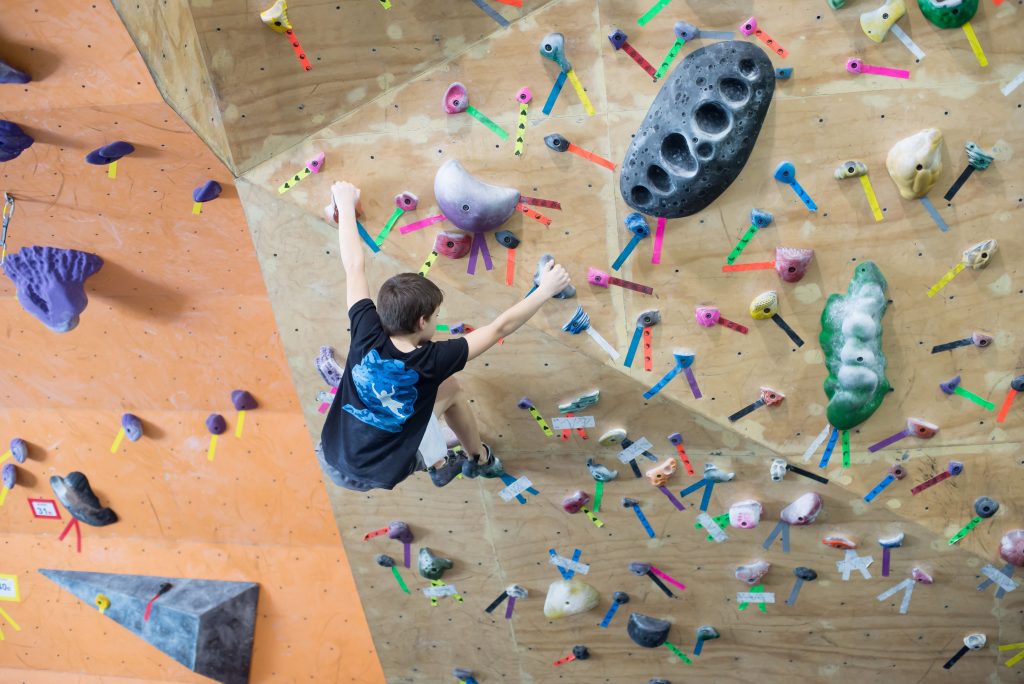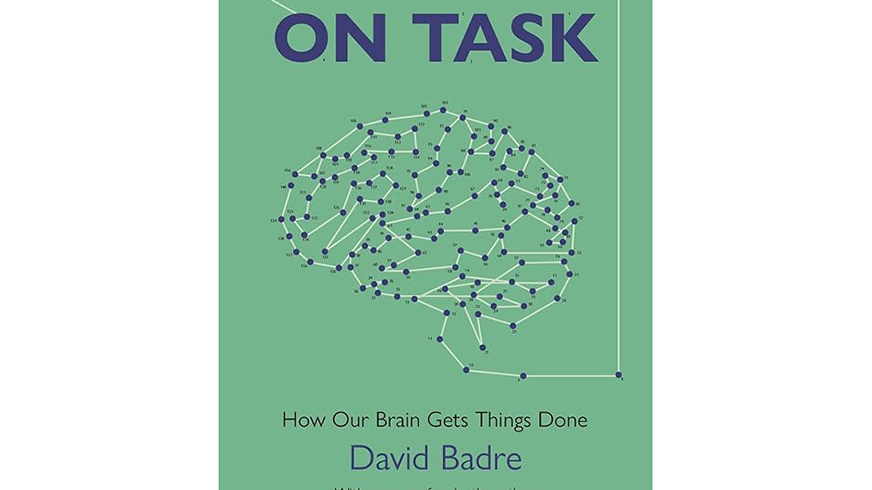To teach math through a problem like the one below, an effective math teacher would first try the problem herself.
“It’s June 1st, and you’ve begun receiving an allowance of $8 dollars on the first of each month. You’ve had your eye on a new jacket that costs $27, not including the additional 8% sales tax. If you want to have at least $2 per month for incidental spending, what percent of your $8 monthly allowance would you choose to save in order to buy the jacket before the start of the new year? Explain your thinking.”*
At minimum, one attempt may lead her to a solution. To more holistically prepare, she would ideally practice several strategies, conceptualizing the problem in many different ways to anticipate and stretch various students’ thinking.
An effective teacher of math explores math herself. It therefore makes sense that in order to effectively teach children about the benefits of mindfulness -psychological, physiological and social1 – a teacher would explore and practice mindfulness herself.
How can mindfulness practice help kids?
Mindfulness practice is being adapted for school implementation to support healthy emotional, mental, and physical development. Children face rigorous testing and extracurricular demands and may be susceptible to high levels of stress beginning at the elementary level. Additionally, in underserved urban environments in the U.S., children experience higher levels of stress and exhibit fewer prosocial behaviors than wealthier counterparts, which has been linked with lower academic performance.2
Susan Andersen and Martin Teicher, researchers of developmental biopsychiatry at Harvard Medical School, suggest that chronic stress exposure at young ages may have effects on neurobiological development. Structures in the brain involved in emotion-regulation and decision-making may be compromised by stress during child development.
In a 2009 review, Andersen and Teicher studied the system between the nucleus accumbens – a basal forebrain structure that interacts with the hippocampus and is involved in memory and emotion – and the prefrontal cortex – known to be involved in decision making and social behaviors. Under times of stress in childhood, the review suggests, this system can be compromised. It is possible that this may be involved in the development of maladaptive behaviors that may affect school performance, including substance abuse.3
Mindfulness – paying attention to the present moment – has begun to show promise as a school-based approach to support children’s emotional and mental well-being. Rather than mental and social health as an “aside” from academics – mindful self-management in classrooms is now being linked with higher math scores even after just a few weeks.4
The potential impact of mindful practice on student stress management, neurological development, and academic performance is gaining credibility. So if we want to encourage children to utilize mindfulness practice, why would it matter if teachers practice?
Why should teachers practice mindfulness?
If we’re preaching to children about the importance of mindful self-regulation to successfully navigate life but we’re doing it with pained, distracted looks and yesterday’s graded papers still stuck to our tired faces, chances are that mindful practice might not land well with our kids.
I paint this as a comical picture, but how physically and emotionally demanding teaching can be is no laughing matter. Teachers work daily to support students’ socio-emotional progress, manage individual and whole-class behaviors, internalize the latest curricular expectations, and tailor instruction to all children’s unique learning needs. Under heavy demands, teacher practice of stress and emotion regulation are crucial for two reasons: (1) enhanced teacher wellbeing may implicitly enhance the classroom environment, and (2) teachers practicing strategies themselves would likely be much more effective, authentic models of the practice when leading students through them.
In a recent review of teacher “extra-role time,” which accounts for the hours teachers spend outside of school days grading and planning or leading student activities on evenings and weekends, U.S. schoolteachers were found to spend an average of 1,913 hours on teaching-related work per week in a 36-week academic year. That’s an average of about 53 hours of work per week. To couch this in context, an average full-time employee works an average of 40 hours per week spread out over 48 weeks.5 Such concentrated, energy-demanding work runs the risk of leading to teacher burnout.
In a 2007 policy report by the National Commission on Teaching and America’s Future, the teacher attrition rate in the U.S. had doubled since the 1990s at nearly 17% nationally and 20% in urban schools. In analyzing possible reasons outside of retirement, the report suggests that stress may be a significant factor: “The problem is not finding enough teachers to do the job – the problem is keeping them in our schools.”6
How can we help teachers feel emotionally balanced and less stressed in their work? In a 2011 study, mindfulness meditation was linked with increases in “positive reappraisal,” an emotion regulation strategy used to re-contextualize a stressful event as positive or harmless.7 Positive reappraisal has historically been shown to mediate reductions in stress. In a recent brain imaging study, mindfulness practice in healthy adults was positively associated with activity in the left and right dorsomedial prefrontal cortex (PFC), the brain regions supporting, among other things, emotion regulation.8,9 Mindfulness therefore may be an effective tool for adult emotion regulation and reduction of stress, and may allow teachers to better manage day-to-day stressful experiences when workload shows no sign of decreasing.
A 2015 pilot study assessed effectiveness of a mindfulness-based stress reduction (MBSR) adapted for educators specifically.10 As its name would suggest, the mindfulness-based stress reduction (MBSR) program, developed by Jon Kabat-Zinn, M.D., was designed to help lower levels of stress through an 8-week mindfulness intervention adapted from historically Buddhist practice for clinical settings. Its benefits have been documented over the last few decades as it has been adapted for adolescents, the elderly, patients with cancer, those struggling with PTSD, and more.
In the MBSR pilot for educators, 18 healthy high school teachers participated in 8 weeks of mindfulness practice and 18 teachers were assigned to a waitlist control group. Mindfulness participants engaged in two-hour weekly sessions guiding them on body awareness, breathing awareness, yoga, mindful eating, mindful walking, and additional meditation techniques with opportunities for reflection. They also were asked to practice with a guided meditation CD for 25-30 minutes daily.
Teachers in the intervention group reported significant improvement in multiple measures of self-compassion including diminished over-identification, which is similar to dwelling on negative thoughts. They also reported significant improvement in ability to remain present and calm and better sleep quality when compared to the control group.
These initial findings may invite more investigation of mindfulness practice for educators, though the study is not without limits. While there is much psychological and neurobiological evidence in academic literature to support the effects of mindfulness on emotion regulation in adults, the present study is one of the first to focus on educator mindfulness specifically, and therefore relied solely on self-report as a measure of effectiveness.
Additionally, a wider and larger sample than 36 teachers will help reduce environmental influence on participant progress. In the pilot, the mindfulness group was comprised of teachers from one school and the control group consisted of teachers at a different school. School culture may have therefore contributed to differences when comparing groups in mindfulness and self-compassion. A larger sample size of teachers across multiple schools, with teachers participating in either waitlist or control at each of those schools, could better isolate effectiveness of MBSR for educators.
Nevertheless, collectively, the research points to the benefits of teachers engaging with the mindfulness practices that they promote to their students.
Taking the Jump
A mindfulness practice may appear to be another requirement piled onto an already full teaching plate, but even a few minutes of daily practice might soften the stress of teaching demands. Here are a few simple ways to begin:
• Dr. Kristin Neff specializes in self-compassion research. Check out www.self-compassion.org for free guided meditations and more.
• For a simple, calming breath technique, consider trying this 3 Minute Full Complete Breath Audio (recorded for you by yours truly!).
A teacher practices math to support her students in math. A teacher practices emotion regulation and mental wellbeing to support students in emotion regulation and mental wellbeing.
Our children and teachers face what seems like a growing number of stressors in life that may not be easily removed. With openness to a personal mindfulness practice, teachers would not only have a chance to feel better in stressful circumstances as helping professionals, they may better guide children in mindful practice from a more grounded, earnest place. As role models to our students, this has the potential to encourage healthy habits and dramatically improve their quality of life.
*(And for the record, I’d save 62.5% of my monthly allowance, or $5 a month. That way, I could have the minimum $2 for spending flow and keep another $1 for separate savings each month, still having enough to buy that jacket by November 1st and impress at holiday parties. But that’s my practice. What’s yours? ☺).
References & Further Reading
- Rempel, Kim. (2012). Mindfulness for Children and Youth: A Review of the Literature with an Argument for School-Based Implementation.Canadian Journal of Counselling and Psychotherapy, 46(3), 201-220. [Article]
- Mendelson, T., Greenberg, M., Dariotis, T., Gould, J., Rhoades, K., & Leaf, L. (2010). Feasibility and Preliminary Outcomes of a School-Based Mindfulness Intervention for Urban Youth.Journal of Abnormal Child Psychology, 38(7), 985-994. [Article]
- Andersen, S., & Teicher, M. (2009). Desperately driven and no brakes: Developmental stress exposure and subsequent risk for substance abuse. Neuroscience And Biobehavioral Reviews,33(4), 516-524. [Article]
- Schonert-Reichl, K. A., Oberle, E., Lawlor, M.S., Abbott, D., Thomson, K., Oberlander, T.F., & Diamond, A. (2015). Enhancing cognitive and social-emotional development through a simple-to-administer mindfulness-based school program for elementary school children: A randomized controlled trial. Developmental Psychology, 51(1), 52-66. doi: 10.1037/a0038454 [Article]
- Brown, L., & Roloff, M. (2011). Extra-Role Time, Burnout, and Commitment. Business Communication Quarterly,74(4), 450-474. [Article]
- NCTAF Policy Brief. (2007). [Brief]
- Garland, E., Gaylord, L., & Fredrickson, S. (2011). Positive Reappraisal Mediates the Stress-Reductive Effects of Mindfulness: An Upward Spiral Process.Mindfulness, 2(1), 59-67. [Article]
- Modinos, G., Ormel, J., & Aleman, A. (2010). Individual differences in dispositional mindfulness and brain activity involved in reappraisal of emotion. Social Cognitive and Affective Neuroscience, 5, 369–377. [Article]
- Hölzel, B., Lazar, S., Gard, T., Schuman-Olivier, Z., Vago, D., & Ott, U. (2011). How Does Mindfulness Meditation Work? Proposing Mechanisms of Action From a Conceptual and Neural Perspective.Perspectives on Psychological Science, 6(6), 537-559. [Article]
- Frank, J., Reibel, L., Broderick, D., Cantrell, P., & Metz, T. (2015). The Effectiveness of Mindfulness-Based Stress Reduction on Educator Stress and Well-Being: Results from a Pilot Study.Mindfulness,6(2), 208-216. [Article]





